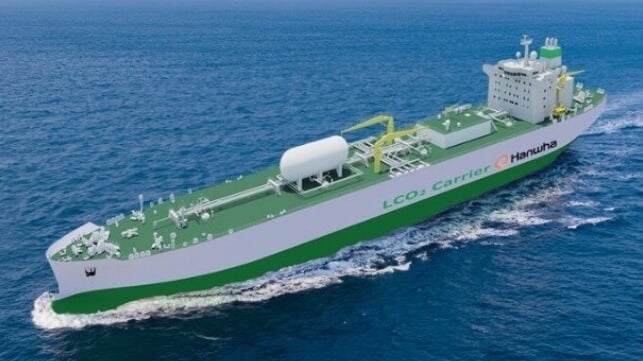Transporting Carbon: Steering a Course to a Sustainable Future
 The United States has taken the lead in the international race to capture carbon dioxide (CO2). According to reports, the U.S. will have the capacity to capture 164 million tons of carbon by 2035, which is almost the equivalent of Europe, Canada and the Middle East combined. The global shipping industry remains at the forefront of transporting CO2; however, it is far from plain sailing. In this article, we explore the challenges of CO2 transportation and how the industry can navigate a path forward.
The United States has taken the lead in the international race to capture carbon dioxide (CO2). According to reports, the U.S. will have the capacity to capture 164 million tons of carbon by 2035, which is almost the equivalent of Europe, Canada and the Middle East combined. The global shipping industry remains at the forefront of transporting CO2; however, it is far from plain sailing. In this article, we explore the challenges of CO2 transportation and how the industry can navigate a path forward.
A billion-dollar opportunity
The International Energy Agency (IEA) has heralded carbon capture, utilization, and storage (CCUS) as a key enabler of emission reduction globally, particularly in hard-to-abate industries such as steel, power, chemical, cement and refining. Demonstrating this demand, figures show that carbon capture attracted more than USD 11 billion in global investments in 2023, which is nearly double the level recorded in 2022.
This represents a significant growth opportunity for the global shipping sector, especially for early movers, as the dependence on CO2 shipping carriers and accredited storage tanks is set to increase. Despite opportunities on the horizon, scaling the application on a global level remains a challenge so we are yet to fully understand the possibilities. According to recent analysis, CCUS uptake needs to grow 120 times over by 2050 for all countries to achieve their net zero commitments.
The CCUS market has great potential for growth and development in the U.S., partly due to incentives offered by the government. In 2023, for example, the U.S. Department of Energy announced a $1.7 billion fund for carbon capture demonstration projects, and a $1.2 billion fund for direct air capture (DAC) hubs. This has accelerated many CCUS projects, driving the momentum towards a net zero future. Despite this potential, issues around CO2 transportation persist.
Pipelines vs shipping
For more than 50 years, pipelines on the s…
CONTINUE READING THE ARTICLE FROM The Maritime Executive HERE



Comments are closed, but trackbacks and pingbacks are open.